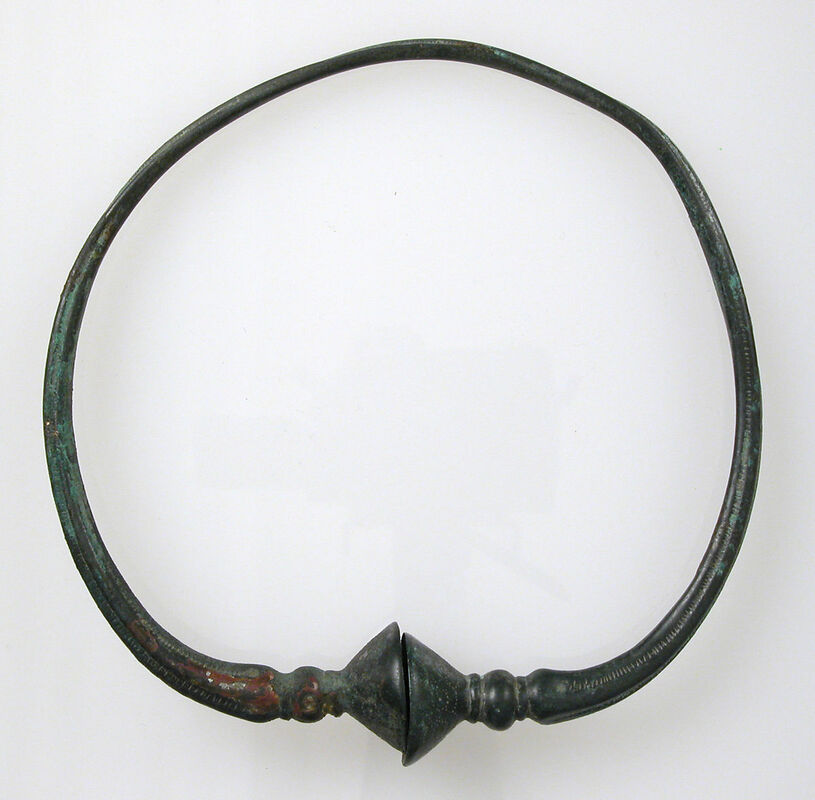I ordered a mass of books from Germany for my textiles research for early Celtic clothing in February. They have been held up in US Customs since March 23. That means I had to find some other way to occupy my time given that leaving the house/property is not much of an option right now. So in addition to starting a garden, I decided to craft a new-to-me Celtic necklace.
While the iconic torque/torc, with its decorated finials, is the the symbol of the Celtic age to many, far simpler neck rings were also in fashion, and where possibly more common in certain times and places. (Note here that the term neckring and torc are also used interchangeably, but I am opting to make a personal distinction here with my terminology to hopefully avoid some confusion.)
While the iconic torque/torc, with its decorated finials, is the the symbol of the Celtic age to many, far simpler neck rings were also in fashion, and where possibly more common in certain times and places. (Note here that the term neckring and torc are also used interchangeably, but I am opting to make a personal distinction here with my terminology to hopefully avoid some confusion.)
While reading through the volumes of material that I have collected about the graves from Hallein near the Dürrnberg Saltmines in Austria, I found that an incredible number of the graves contained very simple neckrings in bronze. They seemed to be fashioned out of wire and often had some method of closure on them, whether it was ends that hooked together, or hammered ends that had holes punched in them (some even had traces of chain in one side), or other mechanisms.
In addition to the neckrings, several of the graves had very interesting triangular pendants in bronze. They were not all identical but were all roughly an inch across. Some had finials at the corners, others had a decorative “bump” in the center of each leg. In some cases it appears that they were part of a necklace, and in others it is unsure.
I have also collected the data from the Durrnberg finds regarding frequency of decorated neck rings, types of closures, and where the triangular pendants have been found, but I need to compile it into a document digestible to those who do not read my rambling shorthand. At some point I hope to upload that information here.
In addition to the neckrings, several of the graves had very interesting triangular pendants in bronze. They were not all identical but were all roughly an inch across. Some had finials at the corners, others had a decorative “bump” in the center of each leg. In some cases it appears that they were part of a necklace, and in others it is unsure.
I have also collected the data from the Durrnberg finds regarding frequency of decorated neck rings, types of closures, and where the triangular pendants have been found, but I need to compile it into a document digestible to those who do not read my rambling shorthand. At some point I hope to upload that information here.
For my project, I opted instead of bronze to use silver wire (10g) to form the neckring and I tapered and curled the ends. I used a number of glass beads appropriate to the region and early La Tene period and one bronze triangular pendant.






 RSS Feed
RSS Feed